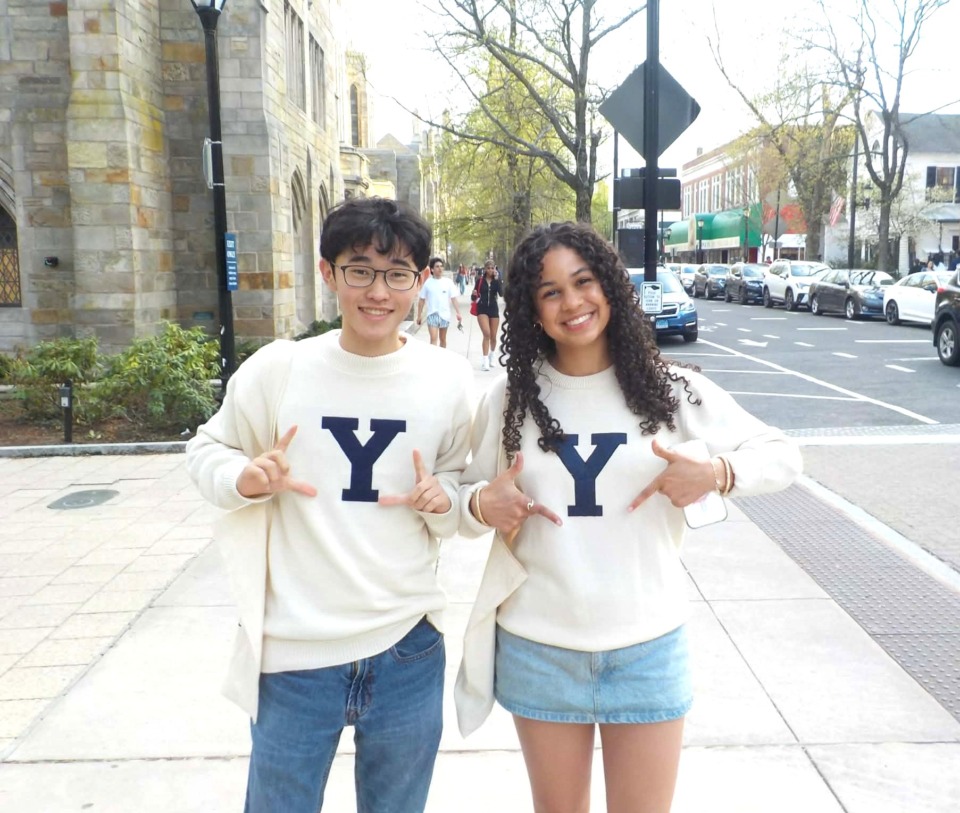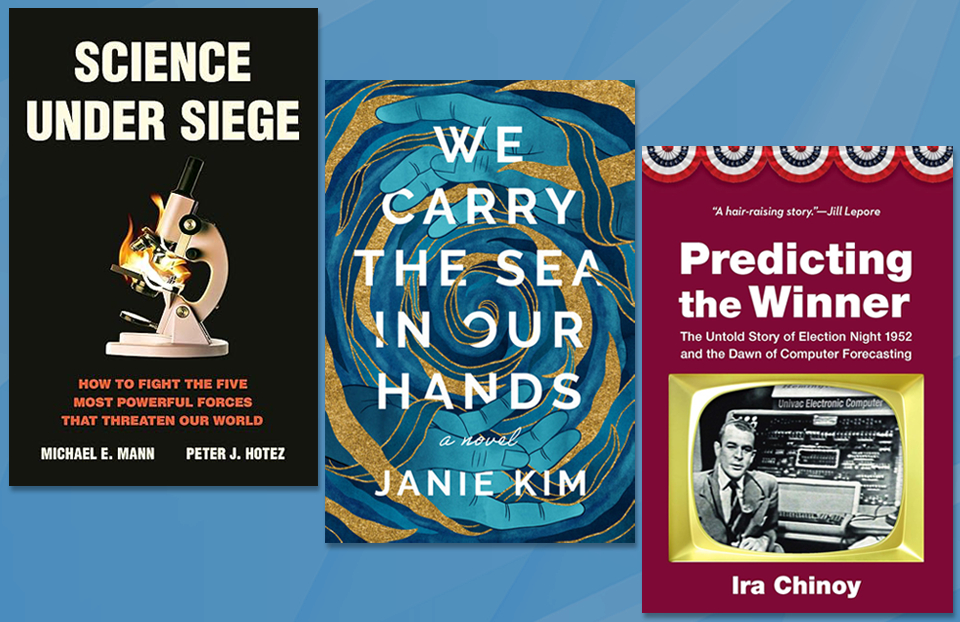ISEF alumnus created partnership between Merck and UVA
Raul Diaz (ISEF 1981, 1982, 1983) was a Vice President and Elkton, VA Plant Manager for Merck and Co. where he received positive attention in the community for creating novel partnerships between Merck and the University of Virginia’s Department of Chemical Engineering. Merck staff members teach an elective class, “Biochemical Engineering Principles,” at UVA, and third-year students can apply for a Merck internship and a Merck Engineering & Technology Fellowship, which includes a $5,000 grant to be applied to the student’s university fees. Raul is now VP and Plant Manager at Merck’s Xochimilco, Mexico site.
Can you tell us about your experiences at ISEF in the early 1980s? What was your favorite moment while participating in the event?
Participating in ISEF was a dream come true for me – you hear so much about a unique place every year, where the finest of worldwide youth research comes together, where in a few days you can catch up with what young minds are thinking about when it comes to science, engineering and math. For me back then, as now, that notion is second to none. I met so many new friends that shared my passion for science, top researchers and officials from around the world that provided rich guidance and feedback, and on top of that, had the ability to compete for prizes (which in the early 80’s were not as substantial as they are today!). I thought that nothing could compare to this combination of winning factors.
How could I dare miss this yearly opportunity? I remember this feeling of excitement that started to build the very day that ISEF was over, because I was thinking about the many plans I needed to execute in order to be there next year. But the best feeling was the one that came from knowing that I was also representing the youth of my country, Puerto Rico; that I was in a way telling the world, “here we are, and great science also happens on our tiny island…”
All my experiences at ISEF were incredibly rich – I especially remember our discussions on the floor, with the judges, but also with fellow students from all over the globe. Knowing that so many people were interested in the same things was inspiring, almost overwhelming, and certainly my biggest motivator to go back and visit with this community as much as possible – that, of course, and the continuation of my own research, and the possibility that through my work I could be contributing a little to a better world.
My favorite moment – this is difficult, because there were many – was probably arriving at the exhibit hall; it was all the energy, the enthusiasm, the smell of wood and boxes, and magic markers, and starting to get to know my neighbors and their projects – not only to “judge the competition,” but to genuinely engage and understand.
Can you give a brief description of the projects you presented?
My ISEF work is divided in phase 1 and 2; phase 1 was all about math – I was studying regular polyhedra, trying initially to come up with new ways to measure traditional mathematical characteristics of these solids, and later attempting to describe a “new” regular polyhedron.
Phase 2 comprised my personal discovery of the connection of math, physics and biology, and that let me to present twice at ISEF about my research on the regulation of temperature in the eyes of cats. Essentially, we immobilized and anesthetized cats, and then probed different structures of the eye for changes in temperature while providing varying external stimuli. Eventually, we evaluated the collected temperature trends with known anatomical and physiological characteristics of the eye in an attempt to explain the observed temperature maps. We ended up concluding that certain parts of the eye, like the sclera, effectively aid in the temperature control mechanisms of the eye, proposed regulation approaches, and further studied the likelihood of our proposals via anatomical and biochemical means (in this case using the lens of rats). These last two years of research presented at ISEF were partly funded by a grant from NSF – I was part of an amazing program called PECES at the Ponce School of Medicine.
What has propelled you to continue with science over the years?
For me, science is about being curious about something, and then searching for the truth, systematically and methodically. The joy of discovery, of finding out the way things work, or simply learning something new, perhaps unexpected, has motivated me for as long as I can remember. Added to this mix are “people” – my teachers, my mentors, my bosses, my peers; I’ve been blessed to be surrounded by extraordinary people that guided me, and truly challenged me, and taught me the wonders of science.
Can you tell us more about your education, career path, and what you have been up to since ISEF?
Immediately after my final year at ISEF, I continued my research at the Ponce School of Medicine in my hometown and eventually completed various papers that were published. I attended college at the University of Puerto Rico in Mayaguez pursuing a degree in Biology, while also actively mentoring high school students from throughout the island during the summers, and every Saturday at the Interamerican University of Puerto Rico in San German.
This was my way of diversifying my research interests, which during these times expanded into plant physiology, microbial ecology, and bacterial physiology, but I was also helping fellow students reach their dreams and giving back to a number of key institutions in my community that helped me, including ISEF. After finishing my undergrad, I enrolled in the Master of Biology program at the University of Puerto Rico, and eventually obtained my graduate degree in Biochemistry. It was during this time that I became really interested in metabolism, and ended up studying sugar utilization during the early stages of marine larvae, specifically those of Albula vulpes, better known as the bonefish. We were able to demonstrate how the larvae grow and develop in such an efficient way through some very particular pathways of galactosidase and galactose use.
It was also during this time that I got my first contact with the world of the pharmaceutical industry. Thanks to some of my work on the biochemistry and developmental enzymology of sugars in larvae, I ended up sharpening my skills on biochemical assaying, and during a graduate seminar at the Medical Sciences Campus of the University of Puerto Rico my particular skillset caught the attention of someone in my audience, who was visiting from Eli Lilly. Long story short, that summer I was working as a Laboratory Associate at Eli Lilly’s campus and helping with some intricate biochemical problem-solving. I was hooked on pharma from that summer on – what impressed me the most was the very challenging questions the industry was trying to answer, as well as the professionalism of the people engaged in trying to solve those problems. In a nutshell, my conclusion was: I can fit in this industry! The rest is history.
Less than a year later, I was hired by Merck & Co., and started a very diverse, intense and challenging journey that is still going on. During the last 23 years at Merck, I’ve been able to explore all aspects of the pharmaceutical business, and I’ve decided that there’s nothing like leading a manufacturing complex. The opportunities I have been given are incredible, but it is clear to me that all of it has been the consequence of the very same conditions that granted me my first opportunity to be part of ISEF: discipline, hard work, excellence and leadership.
As a Plant Manager and a Vice President at Merck you also have the opportunity to teach biochemistry and microbiology, as well as leadership courses at various universities. Can you briefly describe some of your favorite moments while engaging with students in scientific learning?
For me, it’s always been, and will continue to be about the privilege any teacher has, under any circumstance, to peek into a young mind, just for a moment, to try to influence, to spark curiosity, to guide the right questions and to motivate learning – the best for me is when all of that happens. It’s a unique moment when someone in the class looks at you, and you know his or her mind just turned on. This is when I try to step it up. I challenge, I provoke, and I also take the opportunity to drive home the connection between academia and industry, between the theoretical and the practical. This is something many students enrolled in degree programs in science and engineering still do not enjoy today, and it’s so important. Because I’ve been in both ends of this equation, I feel a special responsibility to discuss the topic, and I respect very much what comes out of it.
What would be your advice to all students interested in science?
Find your passion, and don’t be afraid if you are not exactly sure if it’s the right fit. Explore, and experiment on what really attracts your interest. In the process you will learn and discover, and grow. Whatever you decide to do, put all of yourself into it – search, and read, and ask questions, seek advice, find a mentor, talk to friends, make new friends that share your interest. Keep going until you know you are on the right track to make your dreams of knowledge and understanding a reality, and then do it all over again. Never cease to strive for excellence and never let your need to learn extinguish!


